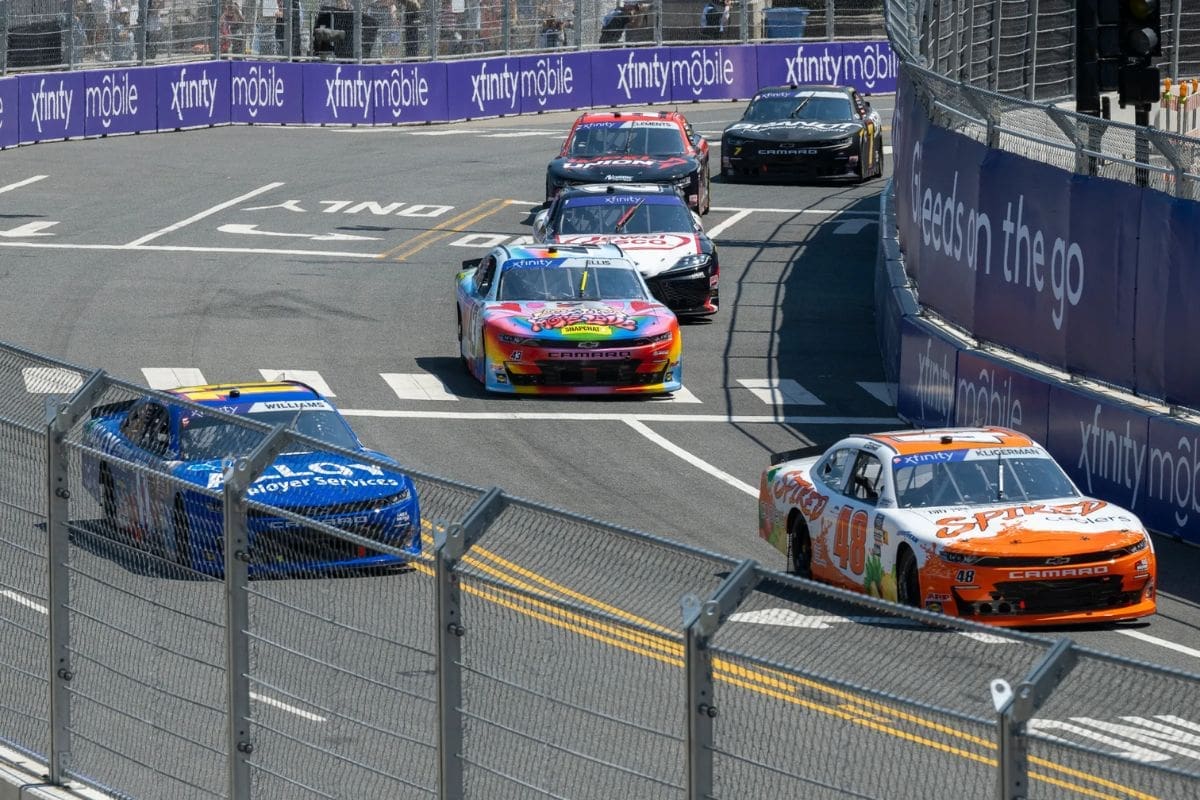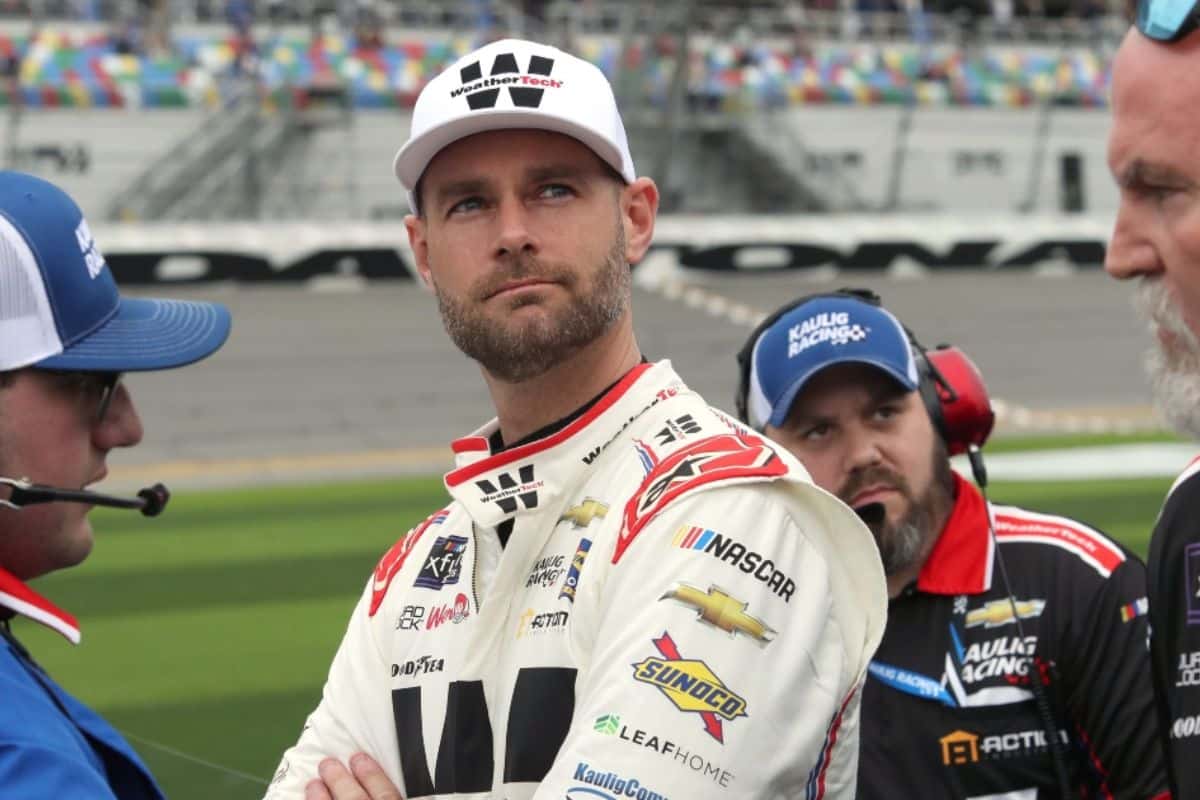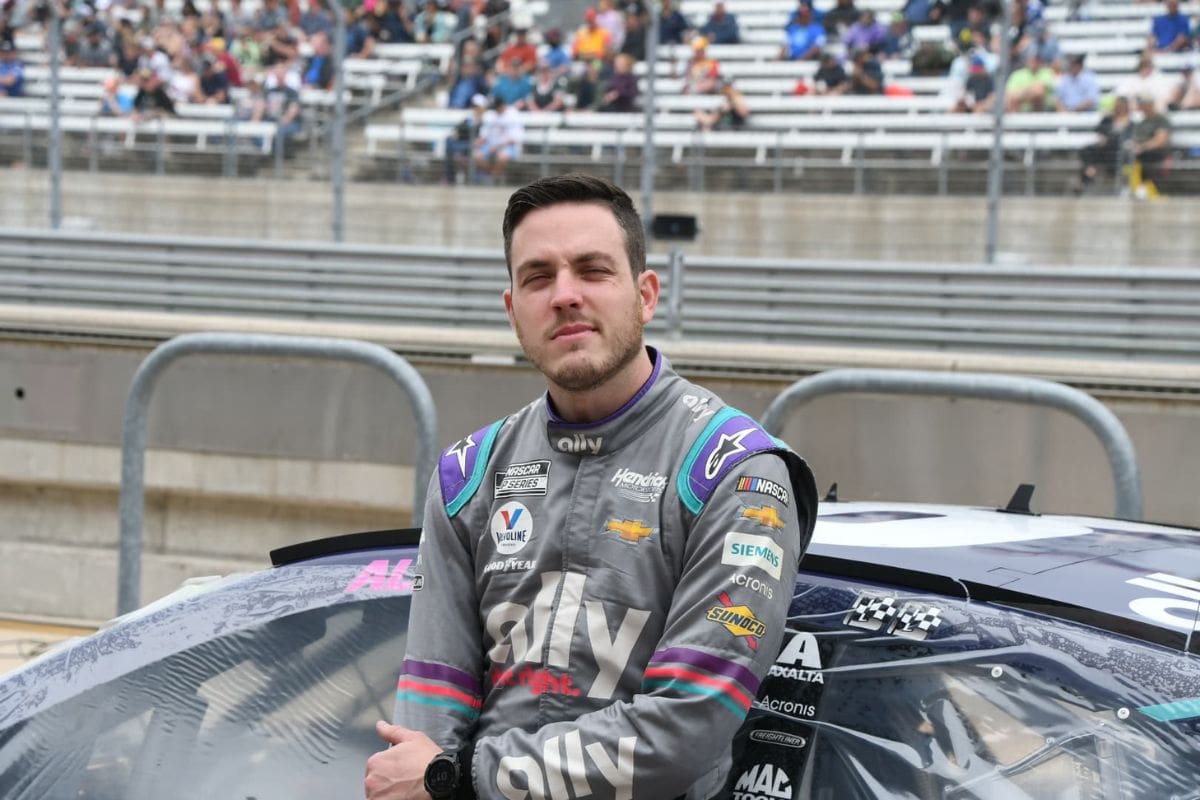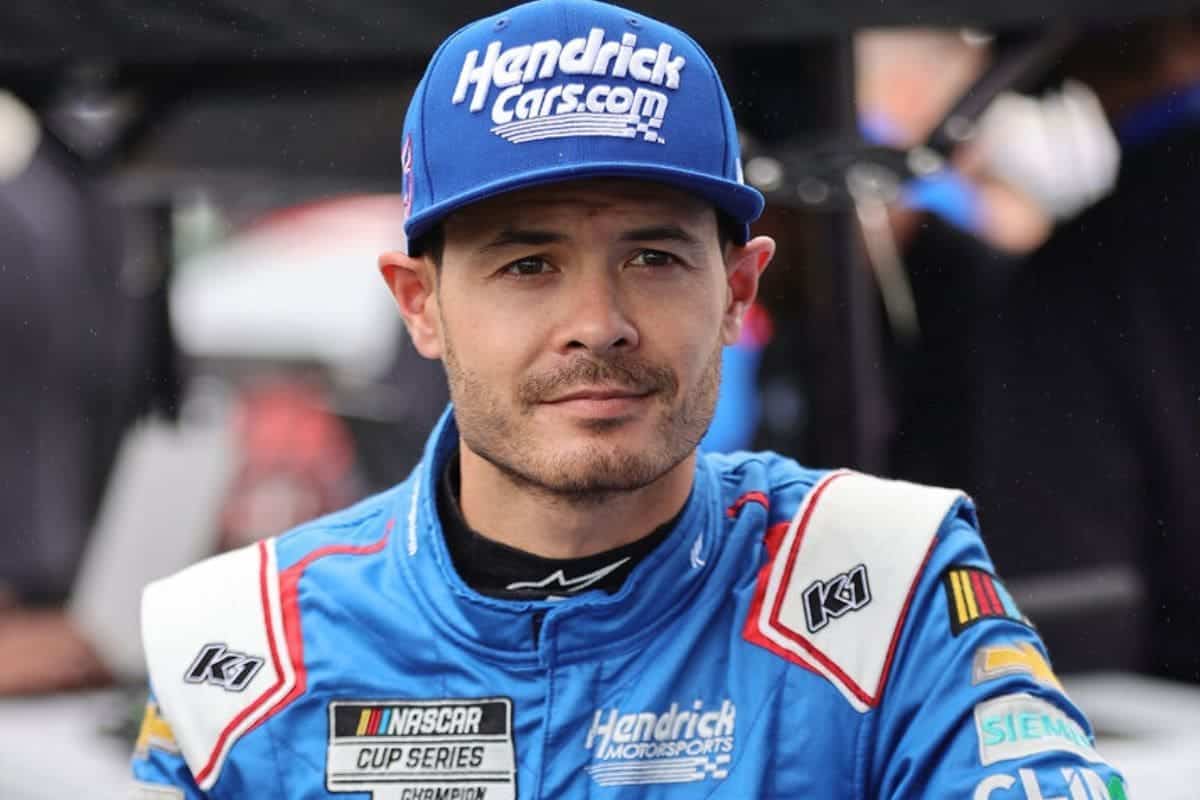Weather Lets Down NASCAR Again: The Chicago street course, a highlight in NASCAR’s calendar, unfolded with gripping intensity and unforeseen challenges this year. From unpredictable weather wreaking havoc on race day to dramatic twists and turns on the track, the event attracted fans and participants alike. Estepp’s insights provide a detailed look into the highs and lows of this spectacle, offering a glimpse into the complexities that define NASCAR racing at its finest.
Weather Woes at the Chicago Street Race
The Chicago street race has faced significant weather challenges for the second consecutive year, leading to widespread frustration among fans and participants. As Estepp noted, “Last night, I kept a close eye on the weather forecast, and they called for only a 20 percent chance of rain.” Despite these seemingly favorable odds, the race day was once again marred by severe weather conditions.
Rain delays have a profound impact on the overall atmosphere of a race weekend. Fans who had traveled long distances and paid for tickets found themselves waiting endlessly, uncertain if the race would proceed. Estepp described the atmosphere, saying, “I kept watching the radar all morning and it wasn’t looking good.” This uncertainty and constant radar checks became a source of anxiety rather than excitement, taking a toll on dedicated fans who look forward to these events.
The impact of the weather on the race itself cannot be understated. Severe rain affects track conditions, making it hazardous for drivers and leading to a higher likelihood of accidents. Estepp observed that “the severe rain this year disrupted the flow of the race,” with incidents like the crash of the fan-favorite SVG occurring due to the slippery conditions. These disruptions not only affect the race dynamics but also the strategies teams had been planned.
Estepp also touches on the broader implications of such weather-related disruptions. The Chicago street race is a high-profile event aimed at broadening NASCAR’s appeal and reaching new audiences. However, repeated weather issues can tarnish the event’s reputation and deter potential new fans. Estepp argues that while the weather is beyond anyone’s control, the planning and scheduling of the race could be more proactive to mitigate such disruptions. He stated, “If we had an earlier start, we might have been able to avoid the worst of the weather.”
Estepp hopes for better weather in future editions of the Chicago street race. He believes that the event has immense potential to grow the sport and provide a unique and exciting racing experience. However, consistent weather issues could overshadow these positives if not addressed adequately. “I really hope they figure this out for next year,” he concluded.
Shane Van Gisbergen’s Early Exit
The early exit of Shane Van Gisbergen (SVG) was a significant blow to the excitement of the Chicago street course. SVG, who won the event last year, had become a fan favorite, with many spectators eagerly anticipating his performance. Estepp remarked, “SVG had louder cheers than even Chase Elliott and Kyle Larson combined,” showing the anticipation surrounding his presence.
SVG’s crash early in the race was a major letdown for fans and marked a turning point in the event. Estepp explained that SVG’s presence on the track brought a unique sense of anticipation and drama, as many wondered if he could pull off a back-to-back win. His early exit not only disappointed those rooting for him but also changed the dynamics of the race, as one of the top contenders was suddenly out. “When SVG crashed, you could feel the collective disappointment,” Estepp noted.
Estepp reflects on the broader implications of SVG’s crash. The incident highlighted the unpredictable nature of street racing, especially under challenging weather conditions. It also underscored the fine line between greatness and disaster in motorsports. For SVG, who had the potential to make history, a small mistake or an unavoidable circumstance led to an abrupt end to his race. “It’s a tough pill to swallow, but that’s racing,” Estepp commented.
The fan reaction to SVG’s crash was a mix of disappointment and frustration. Estepp noted, “A lot of fans left the event early or tuned out after SVG’s crash.” This reaction shows the importance of star power and the role that drivers play in maintaining fan interest and engagement. SVG’s early departure affected the outcome of the race and the overall fan experience.
SVG’s early exit was a significant and disheartening moment in the race. Estepp emphasized that while street racing is inherently unpredictable, the presence of a fan favorite like SVG adds a special element to the event. His early departure not only affected the race dynamics but also left a void in the excitement and engagement of the fans. “It was a tough day for SVG fans, no doubt about it,” Estepp concluded.
Late Start Times Controversy
One of the most contentious issues Estepp addresses is the late start times for NASCAR races, particularly the Chicago street race. He explains that TV networks, primarily NBC, set these start times to maximize viewership and ratings. However, Estepp argues that this scheduling decision often clashes with the realities of summer weather patterns, leading to frequent rain delays and disruptions. “It’s frustrating because these late starts just don’t align with summer weather patterns,” he noted.
Estepp details the frustrations expressed by many fans regarding the late start times. Afternoon showers are common during the summer, especially in regions without track lights. By starting races later in the day, NASCAR increases the risk of encountering weather-related delays. Estepp pointed out that while TV ratings are crucial for the business side of NASCAR, the fan experience at the track and at home should also be a priority. “Fans deserve better than to sit through endless rain delays,” he emphasized.
He also highlights the broader implications of these scheduling decisions. Estepp suggests that earlier start times could provide a larger window to complete races on the scheduled day, reducing the likelihood of delays and cancellations. This change could enhance the overall fan experience and ensure that races are more predictable and less subject to weather disruptions. “An earlier start time could make all the difference,” he asserted.
Estepp discusses the role of future broadcasters like Amazon and TNT in potentially addressing this issue. He expresses hope that these new partners will bring more flexibility to race scheduling, considering the impact of weather on race weekends. Estepp believes that a balance can be struck between maximizing TV ratings and ensuring a smooth and enjoyable race day experience for fans. “New partners might be more willing to experiment with start times,” he suggested.
Estepp’s discussion on late start times underscores the need for NASCAR and its broadcast partners to consider the practicalities of race day weather conditions. He advocates for a more fan-centric approach to scheduling, which could help mitigate the frustrations and disruptions caused by rain delays and ultimately improve the overall race experience. “We need to find a balance that works for everyone,” Estepp concluded.
Alex Bowman’s Heroic Victory
Alex Bowman’s victory in the Chicago street course is a testament to the power of strategic decision-making and taking calculated risks. Estepp commends Bowman’s crew chief, Blake Harris, for the bold call to keep Bowman on older wet weather tires as a dry lane began to form. This decision played a crucial role in securing the win, demonstrating the importance of adaptability and quick thinking in motorsports. “Blake Harris made a gutsy call that paid off big time,” Estepp noted.
Estepp provides a detailed account of the race’s critical moments, highlighting Bowman’s impressive pass on Joey Hand to take the lead. Despite not being the fastest car on the track, Bowman and his team capitalized on the opportunities presented to them. Estepp praises Bowman’s skill and determination, noting that his ability to execute under pressure was key to his success. “Bowman may not have had the fastest car, but he had the smartest strategy,” he commented.
The win was particularly significant for Bowman, who had not secured a victory in over two years. Estepp explains how this win alleviates the pressure on Bowman, as he now has a guaranteed spot in the playoffs. The victory also serves as a confidence booster for both Bowman and his team, reinforcing their belief in their strategies and capabilities. “This win means everything for Bowman and his team,” Estepp emphasized.
Estepp also addresses the controversy involving Bowman and Bubba Wallace. Early in the race, Bowman overcooked a corner and spun Wallace out of the top 10, which led to a heated post-race exchange. Estepp sympathizes with Wallace’s frustration but also acknowledges Bowman’s apology and explanation. The incident added an extra layer of drama to Bowman’s victory, highlighting the intense emotions and high stakes involved in NASCAR racing. “The clash with Wallace added a bit of drama to an already thrilling race,” Estepp noted.
Bowman’s gutsy victory is a highlight of the Chicago street race, showcasing the importance of strategic decisions and seizing opportunities. Estepp’s account emphasizes the complexities and drama of racing, where skill, strategy, and a bit of luck all play vital roles in determining the outcome. “Bowman and his team showed that smart decisions can lead to big rewards,” Estepp concluded.
Kyle Larson’s Hard Impact and Other Key Finishers
Kyle Larson, a favorite to win after SVG’s exit, had a tough race that ended with a significant crash. Estepp describes Larson’s head-on collision with the tire barriers, marking it as one of the hardest impacts seen at this track. “Larson’s crash was one of the most severe impacts I’ve seen here,” Estepp remarked. Larson’s crash serves as a reminder of the inherent risks in racing, especially under challenging conditions.
Despite Larson’s exit, the race saw several notable performances. Tyler Reddick finished second, narrowly missing out on victory due to a late mistake. Estepp reflects on Reddick’s strong performance and the disappointment of coming so close to a win. “Reddick was so close to victory; it was heartbreaking to see him fall short,” Estepp commented. Reddick’s determination and skill were evident throughout the race, making his second-place finish both impressive and frustrating.
Ty Gibbs secured a third-place finish, showing his potential and solidifying his status as one of the rising stars in NASCAR. Estepp highlights Gibbs’ consistent performance and ability to stay competitive throughout the race. Gibbs’ finish is particularly significant as it positions him well in the playoff race and boosts his confidence moving forward. “Gibbs is proving he’s a force to be reckoned with,” Estepp noted.
Joey Hand and Michael McDowell were among the surprise top finishers. Hand’s fourth-place finish and McDowell’s top-five result were unexpected but well-deserved. Estepp acknowledges their impressive performances and the strategic decisions that helped them capitalize on the chaotic race conditions. “Hand and McDowell both had standout performances today,” Estepp remarked. These surprise finishes add to the unpredictability and excitement of NASCAR racing.
Chicago street race was filled with drama and unexpected outcomes. Estepp’s detailed account of Larson’s crash and the notable finishes of other drivers provides a comprehensive overview of the race’s key moments. The performances of Reddick, Gibbs, Hand, and McDowell highlight the diverse talent in NASCAR and the thrilling nature of street racing. “It was a race full of surprises and standout performances,” Estepp concluded.





BUBBA WALLACE, NASÇAR NEED TEACH HIM WITH 3 RACE SUPENSION HOW CONTROL HIS TEMPER, HE NEED BE TAUGHT
IT GONE TO FAR, UNSPORTMANSHIP. BEFORE. HE HURT SOMEONE.